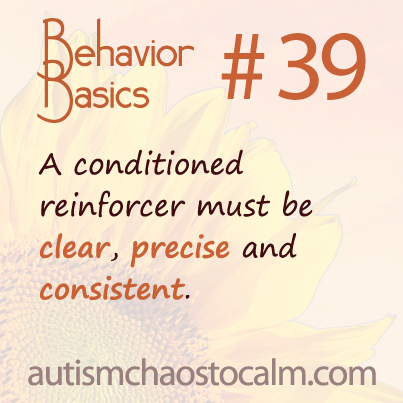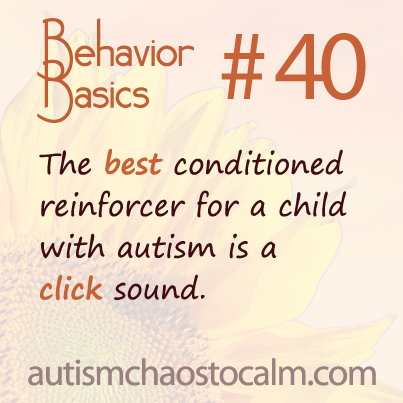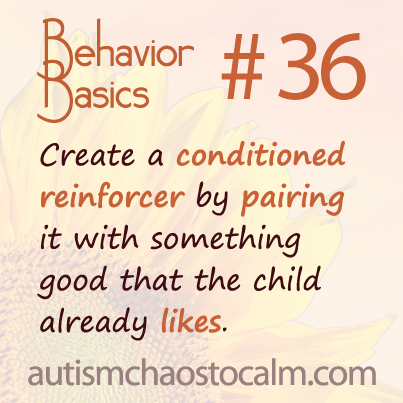 Three types of learning supports
Three types of learning supports
We all know that kids with special needs need “supports” to help them learn. There are three categories of supports:
- physical support
- visual support
- acoustical support
Two of these, the physical and visual supports, are well known. The third category, the acoustical support, is not yet well known, but is rapidly proving its worth.
Each of these supports has a unique role. Let’s look at what each type of support can provide, and at their strengths and differences.
Physical Supports
Almost everyone is familiar with supports for kids with physical disabilities: among these are adapted equipment, braces, grips, wheelchairs, slant boards and adapted keyboards. These devices provide support to the body in performing tasks. With these devices, children with physical disabilities can achieve goals (mobility, reading, writing, self-care) that they could not achieve without them. Physical supports play a vital role in helping these children build skills and achieve independence.
Visual Supports
Up until the tidal wave of autism diagnoses, adaptive equipment supports were about the only known type of support. With the advent of learners with autism, families and schools learned about another outstanding type of support: the visual support. The strength of the visual support is that it provides information to a child who may have language and communication delays. The visual array of pictures can portray the steps a task, explain the schedule for the day, or provide information about emotions and expectations. The visual support can be a sheet of paper, a computer display or a quick note on a whiteboard. People have used visual supports in countless creative ways. Visual supports have been enormously successful in the autism community and are now a standard item in the home and in special education classrooms.
Acoustical Support
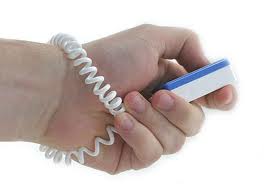 Now for the newcomer: the acoustical support.
Now for the newcomer: the acoustical support.
The acoustical support, known as Teaching with Acoustical Guidance, or TAGteach, combines positive reinforcement with a sound (a “tag” or “click”) to increase desired behaviors and build skills. With this acoustical “event marker,” an instructor presses the tagger to make a sound at the precise instant a learner has accomplished a specific goal. As soon as possible after the “tag,” the instructor gives a treat, token or other desired item to the learner. These two actions, tag and treat, deliver positive reinforcement to the child.
From the science of Applied Behavior Analysis (ABA), we know that behavior that is reinforced is behavior that will occur again. With the “tag” (the acoustical support) an instructor or parent can mark and reinforce even the smallest flash of a desired skill. When that small flash is reinforced, it will occur again and for longer duration. Eventually, with time and practice, it can develop into a reliable behavior. TAGteach makes it quick and easy to vastly increase the amount of positive reinforcement in a child’s environment, to personalize the goals to the child’s level, and to work at the child’s pace. The acoustical support has tremendous potential for helping all children learn.
How are these supports the same, and how are they different?
They are the same in that each one does an important job. They are different in that each type of support has a different role:
Adaptive equipment provides crucial physical support to the body.
It is a static, ongoing support, and it provides a service that neither of the other supports can do. It does not provide information; it does not provide positive reinforcement.
The visual support provides information.
The visual schedule tells the child how to do something, what is going to happen next, or gives the child a way to express emotions. The visual support is usually presented to a child before something happens (before the task or before the next event on the schedule), therefore it works as an antecedent. It does not provide physical support to the body and it is not a consequence that provides positive reinforcement.
The acoustical support provides positive reinforcement.
The acoustical marker, the “tag” or click,” immediately tells a child that she has accomplished a goal. As soon as possible after the tag, the child receives positive reinforcement (a treat, token, praise or other desired item). Since the tag comes after the desired behavior, it is a consequence, and better yet, it is a positive consequence. We know from behavioral science that the consequence, not the antecedent, determines the future course of a behavior, and that a positive consequence will result in the behavior happening again. Thus the acoustical support has a key role to play in increasing and strengthening desired behaviors. The acoustical support does not provide physical support to the body, and it does not provide information about the afternoon activities.
Each support has a vital job to do, and each one has its own specific role
If you want to provide information to a child about the events of the day, use a visual schedule; a physical support or an acoustical support will not do this for you.
If you want a child with a physical disability to move across the room, use the appropriate equipment for that child; a visual support or an acoustical support will not do the job.
If you want a child to perform a desired task more often and for longer periods of time, use the acoustical support — it provides the positive reinforcement needed to achieve this. The physical support and visual support cannot do this job.
All of these supports are important to the education of children with disabilities. If we think about what we want a support to accomplish, we can better select the right one. Think about whether you want to provide physical support, information or positive reinforcement to the child, and chose your support accordingly.
Better yet, think about combining the supports in creative ways!
Want to help a small child use a walker? Provide the walker, and break down the learning procedure into small steps; use a tagger to mark each tiny action that the child makes with a hand or foot to help propel the walker. Want to tell a child that he will be leaving school early? Make a picture schedule to show that mom is picking him up after lunch, and tag/reinforce when he Picks Up His Backpack and Walks Nicely to the door. Want a child to play with blocks? Use a tagger to reinforce the child every time she Walks Near Blocks, then Looks At Blocks, then Moves Hand Near Blocks, then Touches Block.
We can help our children learn more by using the full array of supports, and understanding what each support can do. With the right support for the right job, the child can make more progress across all fronts. That is a great outcome.
What is TAGteach?
TAGteach stands for Teaching with Acoustical Guidance. TAGteach is a teaching and communication method based on the scientific principles of Applied Behavior Analysis (ABA).
TAGteach enables extremely precise positive reinforcement of behavior by using an acoustical signal to “mark” the behavior – at the precise moment the child performs the behavior! The acoustical signal is a short, sharp sound made by a handheld device (the “tagger”). When the child performs the correct action, the parent/instructor immediately presses the button on the tagger and hands over a treat (candy, treat, token, praise, social recognition, or money) as a reinforcer.
With TAGteach, it is easy to reinforce behaviors precisely and quickly. The immediate, accurate feedback and positive reinforcement result in the child performing the correct action more often, and for longer periods of time. With immediate feedback and learning tasks broken down into small steps, children can learn many new skills with TAGteach — at their own pace.
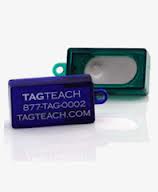 Check out the TAGteach International website.
Check out the TAGteach International website.
Join the free TAGteach listserve.
TAGteach taggers are available here.
See Martha’s book about TAGteach for Autism or ask a question (with no obligation).
Sign up for my mailing list to receive updates, new articles and free tips right in your inbox!
If you liked this post, please share it on social media via the vertical gray menu on the far right. Thank you!
Share the post "Physical support, visual support, or acoustical support? Which one should I use, and why?"
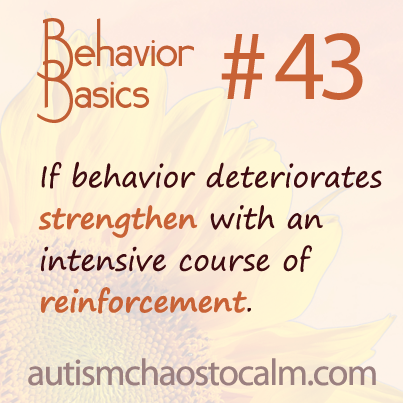 43. If a behavior deteriorates, strengthen it with an intensive course of reinforcement
43. If a behavior deteriorates, strengthen it with an intensive course of reinforcement
 Check out the TAGteach International
Check out the TAGteach International 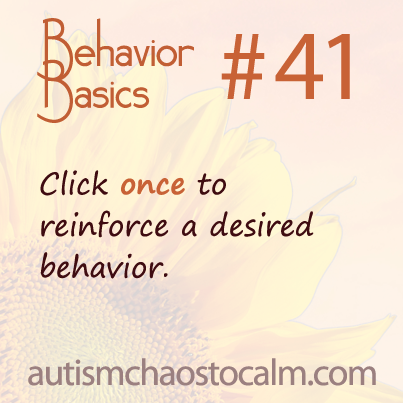
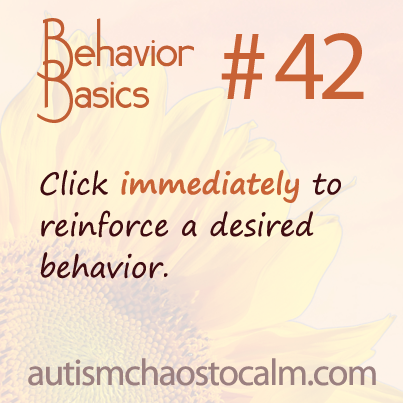


 Check out the TAGteach International
Check out the TAGteach International 